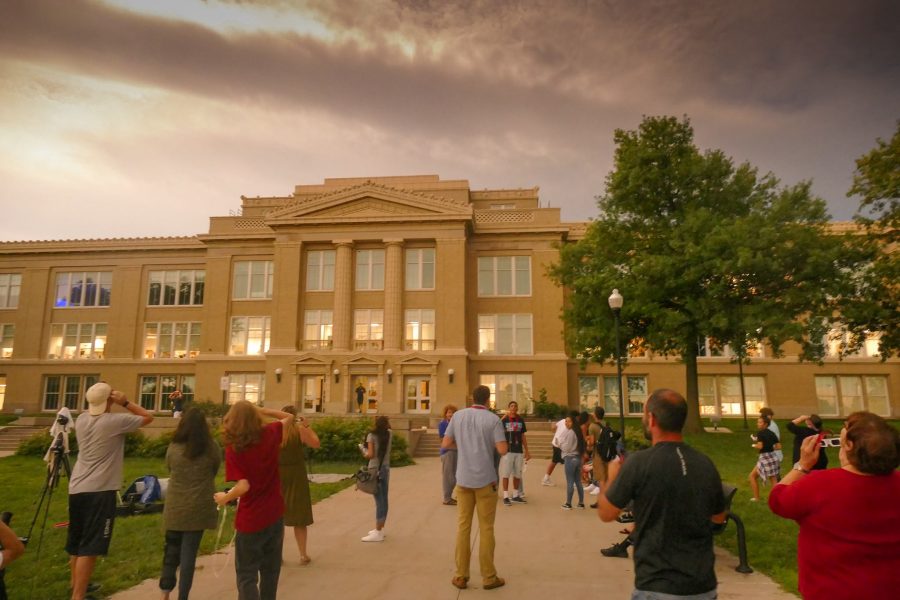By Meg Boedeker |News| –
August 21, 2017, the United States. Everyone knows what this day brings–a meteorological phenomenon unlike any other–The Great American Eclipse.

Hearing this phrase may bring feelings of nervousness to some, and excitement to others. The day of the eclipse was exciting for many, but for the small Nebraska towns that had to suffer from great short-term population expansion in such a small amount of time, the eclipse may just remind them of traffic held up for hours and jam-packed streets within the small, rural towns.
As reported in the Lincoln Journal Star, many small, rural towns within Nebraska on the path of the eclipse that had received around 35-200 more planes landing at local airports than they would usually receive because of the eclipse. This shows the true effect of such an event on the United States of America.
An eclipse is an occurrence where the orbits of the sun and the moon align. In this instance, the moon falls between the sun and Earth, creating a small area of shadow on the surface of Earth. This is why we witnessed the slight darkness at totality. This year, the path of that shadow crossed the continental United States (and Nebraska) including Lincoln. Students and staff across the district got out of their buildings in the afternoon to witness the event.

This eclipse was truly special day for many people around the country and within our community. LHS sophomore Sophia Hancock enjoyed the eclipse. “Nothing like this ever happens in Nebraska,” Hancock said. It’s amazing that our quaint state of Nebraska was repeatedly recognized as the “cool” place to be! People came to Lincoln and surrounding towns from far away places, but we got to stay exactly where we were.
In addition, Nebraska is very rarely touched by a solar eclipse, and we were able to witness one in our lifetime (which is quite lucky). Even Bill Nye was in Nebraska at the Homestead National Monument in Beatrice for the eclipse! Although many can agree that the partial eclipse moments weren’t as exciting as totality, most were happy to be witnessing this marvelous meteorological moment. Many people, including sophomore Ella Hansen, say, “If I wasn’t in the path of totality, then I probably wouldn’t have gone and seen it, or even cared about it.” For Hansen and plenty of others, the eclipse seemed like another “day-to-day” meteorological event with little significance. However, after experiencing the event, many people were humbled by the untainted beautiful capabilities of the universe.
Many people viewing the eclipse may not have had proper eyewear to view the eclipse in its partial state, or perhaps they accidentally took their glasses off too soon and took a glance at the sun. Maybe some people got their glasses from an un-approved seller and weren’t aware of this fact. This shouldn’t be a worry unless, as reported by National Public Radio, one has eye-discomfort, pain, blurred vision, and/or spotted vision, along with a few other symptoms around 12+ hours post-eclipse. It’s very difficult to tell if someone is damaging their eye when looking at the partial eclipse or sun, and that is why everyone needs to be extremely cautious when looking at the sky. Although LPS took many precautions to keep their students and staff safe, people were still nervous about the potential effects of staring at the partial eclipse/sun.
Math teacher Amy Hung relives the moments after the eclipse. “I was a little nervous about it because my eyes were a bit red that evening,” Hung said. “However, my eyes often get irritated by my contacts, and I knew I had not looked at the sun directly without the solar glasses, so I felt pretty safe.”
For many, solar eclipses are full of unknowns, but now, a few days later, some people are already getting ready for 2024’s American Eclipse.
